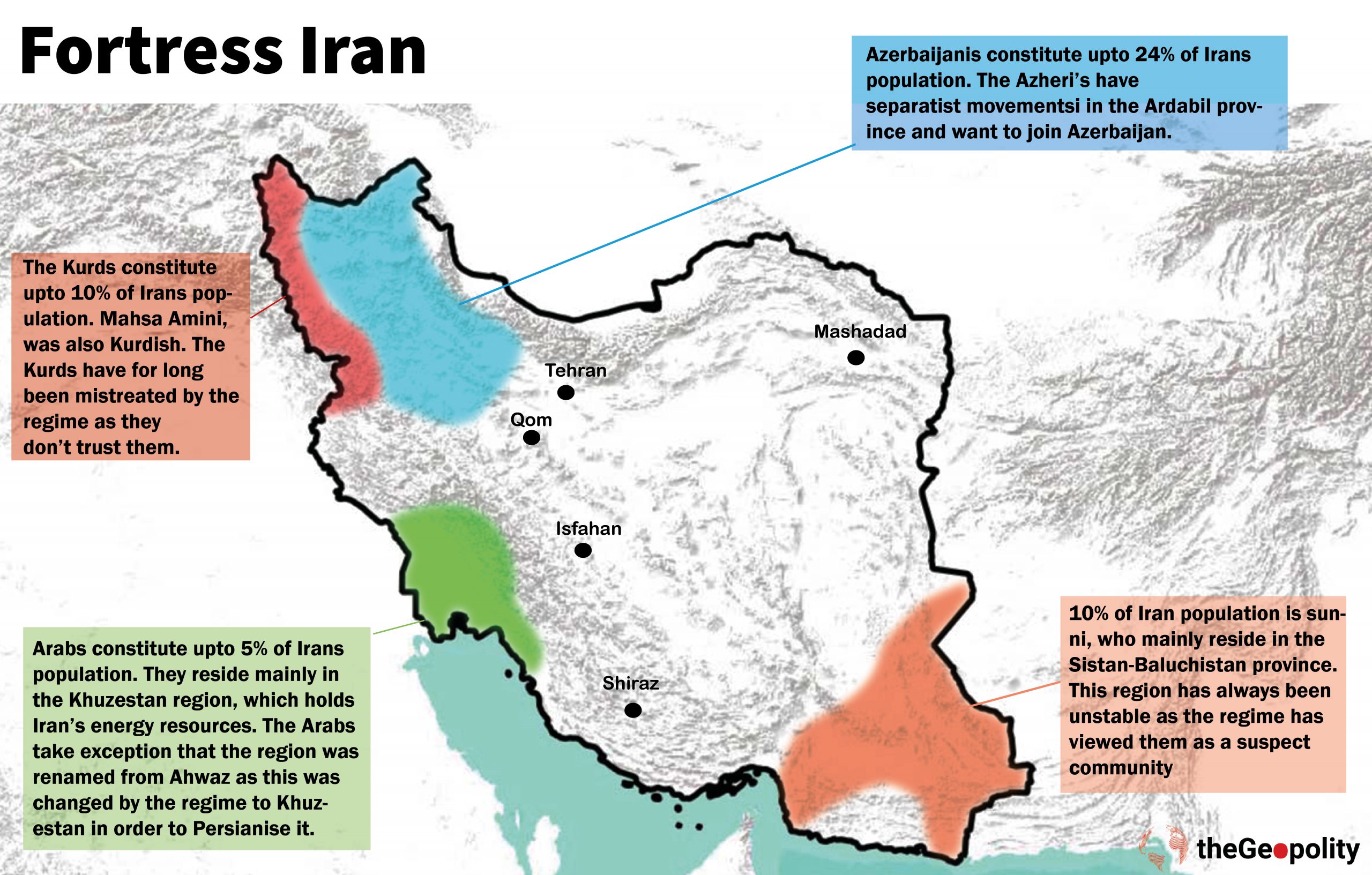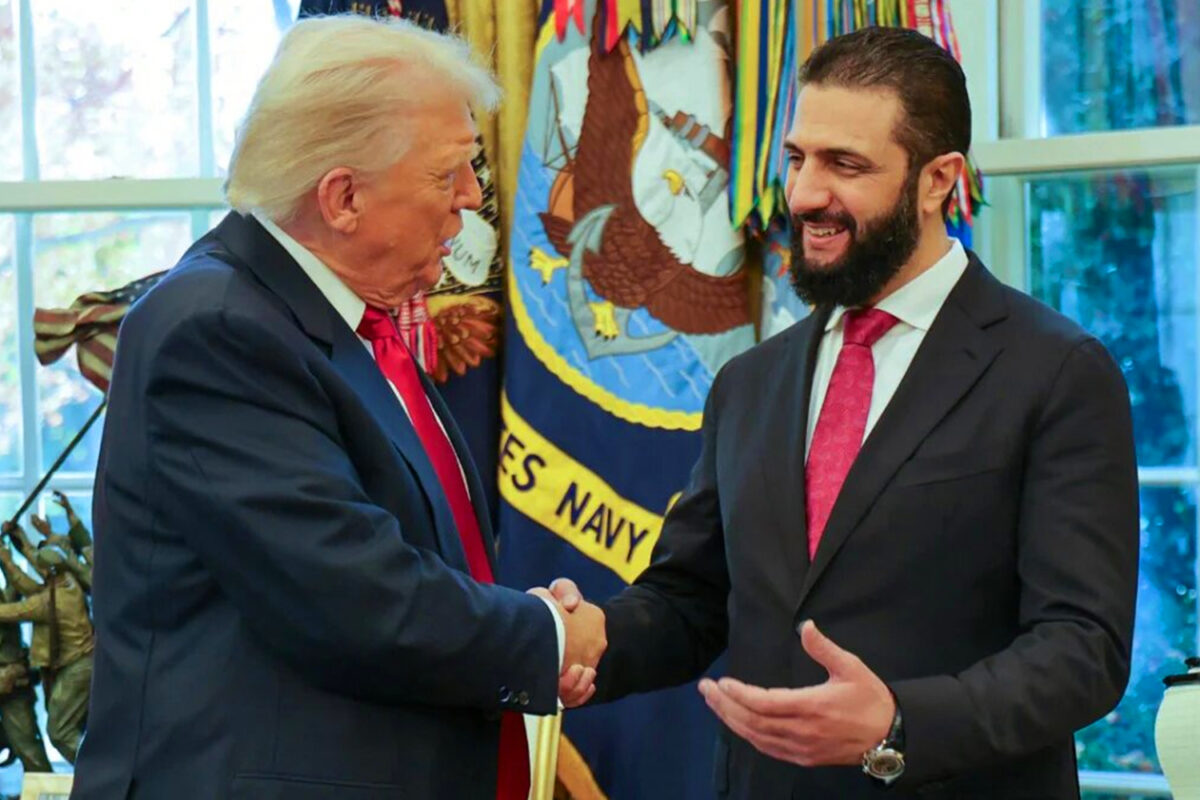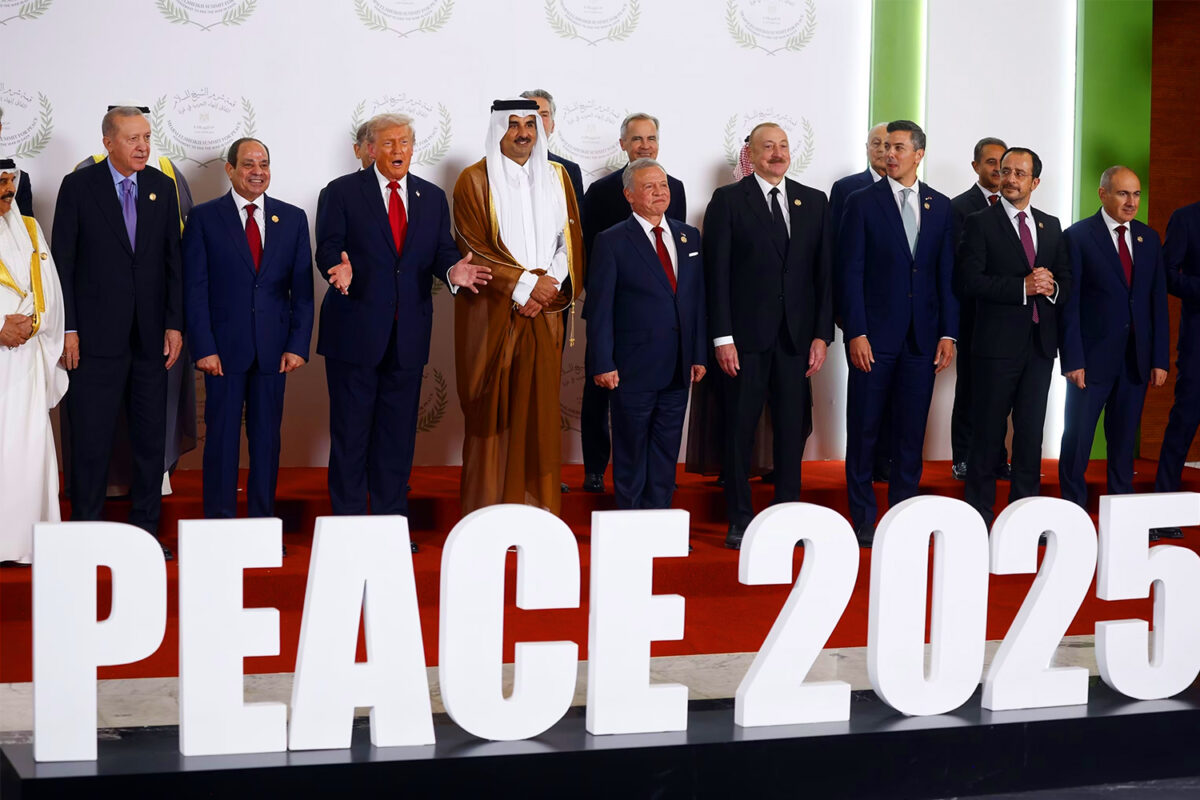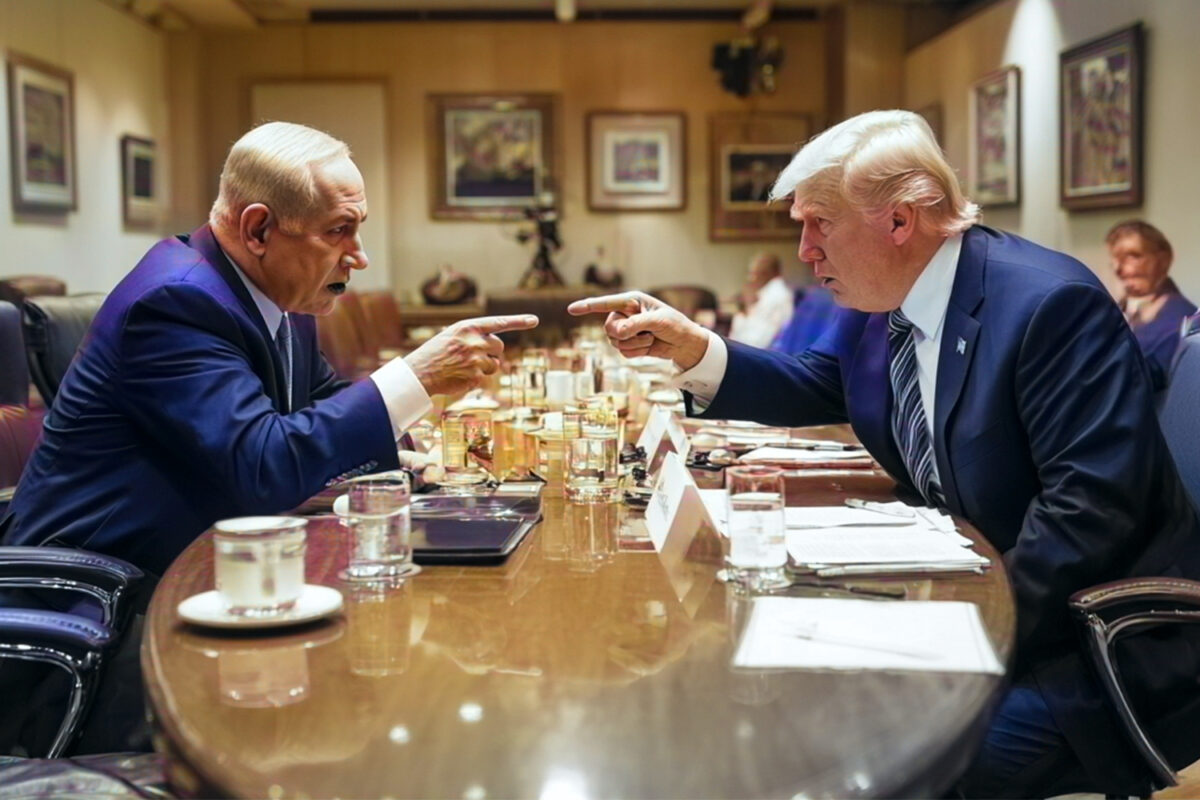The anniversary of the October 7 attack marks a pivotal moment for Iran’s geopolitical standing, particularly within the so-called Axis of Resistance, a network comprising Iran, Hezbollah, the Houthis and various regional militias. This date provides a lens to examine Tehran’s restrained military responses, its careful navigation of internal divisions, and its broader strategic objectives including the nuclear deal. Despite Iran’s rhetoric of resistance and defiance against Israel, its actions – or lack thereof – tell a story of a regime more focused on its own national interest rather than any meaningful form of resistance.
Even before October 7, the Iranian regime was facing internal challenges. Decades of corruption, incompetence, a stagnating economy, and a declining birth rate had weakened its foundations. Despite these vulnerabilities, a complete collapse was unlikely. Iran’s highly centralised political system, with Supreme Leader Ali Khamenei wielding ultimate authority, maintained control through a powerful coercive apparatus, including the Islamic Revolutionary Guard Corps (IRGC). The regime effectively suppressed dissent, even among its ethnically diverse population—Kurds, Azeris, and Arabs—who, despite their potential to disrupt the state, remained divided, limiting the opposition’s ability to unite.
The October 7 attack placed Iran in a precarious geopolitical position. Despite its leadership role in the Axis of Resistance, Iran hesitated to intervene directly, revealing the constraints on its military and strategic influence. During a meeting in early November 2023, Iran’s supreme leader reportedly criticised Hamas for providing no warning of the attack, and stated that Tehran would not enter the war on their behalf, underscoring its reluctance to be drawn into the conflict.[1] Former Foreign Minister Mohammad Javad Zarif emphasised that Iran could not afford direct confrontation, especially with the US seeking to provoke Iranian involvement without providing substantial evidence of its role in the attacks.[2]
Despite its leadership role in the Axis of Resistance, Iran hesitated to intervene directly, revealing the constraints on its military and strategic influence
Geopolitically, the momentous event underscored the limits of Iran’s influence within the Axis of Resistance. Despite anti-Western rhetoric, Iran’s actions have historically been more pragmatic, marked by tacit cooperation with Western powers in regions like Syria and Iraq. This pragmatic approach highlights a divide between Iran’s rhetoric and its actual stance.
The bolder the threat, the colder the response
On the 1st of April, Israel launched missile strikes targeting the Iranian consulate in Damascus, killing senior commanders of the IRGC, including Brigadier General Mohammad Reza Zahedi and his deputy. Tehran’s ambassador to Syria, Hossein Akbari, promised a decisive response, but the retaliation was muted. In what was presented as an act of vengeance, Iran launched over 300 projectiles against Israel, perfectly telegraphed and easily intercepted, leaving minimal damage on the ground.
Iran’s failure to deliver on its threats exposed a cyclical pattern: bold rhetoric followed by restrained action. Tehran quickly declared the matter “concluded” under Article 51 of the UN Charter, signalling that there would be no further escalation unless provoked again.[3] This incident served to seriously undermine the rhetoric of resistance and reasserted Iran as a regional actor whose military threats increasingly lack credibility, limiting its leverage in both regional diplomacy and strategic deterrence.
In loving memory of Ismail Haniyeh?
Iran’s response to the July 31st assassination of Hamas leader Ismail Haniyeh further revealed this pattern of restraint. Following the assassination, Khamenei promised “harsh punishment” for Israel, echoed by various Iranian officials. By early August, Iranian leaders stated that the response would be a special operation designed to instil “deep regret” in Israel. However, weeks turned into months, and the promised retaliation lost credibility.
Statements from top officials, including the IRGC’s Deputy Commander Mohammad Reza Falahzadeh and Iran’s representative to the UN, Amir Saeid Iravani, continued to emphasise the inevitability of retaliation, though no significant action followed. Most recently, Mohsen Rezaei, a former IRGC chief, assured that Iran was “lying in wait” and would deliver a “harsh blow” to Israel when the time was right. Drawing on lessons from Iran’s experience in the Iran-Iraq war, officials cited the need for careful calculation and timing. Nevertheless, nearly two months after Haniyeh’s death, Iran’s response was nowhere to be seen, reinforcing the perception of its reluctance to follow through on its threats.
Prioritising National Interests
In the past few weeks, Israeli airstrikes in Lebanon have resulted in over 630 deaths, including the loss of 50 children and 94 women, displacing more than 90,000 people according to the UN.[4] Despite these devastating statistics, Hezbollah has shown minimal response to the escalating conflict. Traditionally, Hezbollah, acting as a key Iranian ally, has drawn a red line at attacks on Lebanese soil, declaring it would only intervene if Israel expanded the war beyond Gaza. Yet, with Israeli forces ramping up their assaults in Lebanon, Hezbollah too remains characteristically muted.
Iran’s silence in this situation speaks volumes about its current priorities. As Israeli airstrikes continue to destroy Hezbollah infrastructure, Iran has focused almost exclusively on nuclear negotiations with the US, sidelining any substantive response to Israel’s aggression.[5] While Tehran’s rhetoric has long centred around supporting the Palestinian cause, the Iranian regime appears more concerned with reviving the nuclear deal, using the de-escalation narrative as leverage. This diplomatic focus reflects a broader strategic shift, with Iran favouring long-term security and economic gains over military escalation, despite the suffering of its allies in Lebanon and Gaza.
Iran’s Commitment to Palestine: A Rhetorical Façade
When we examine Iran’s response—or lack thereof—across these incidents, it becomes clear that Tehran’s commitment to the Palestinian cause is more rhetorical than substantive. Both Iran and Hezbollah had ample opportunity to overstretch Israel when it launched its assault on Gaza in October. Instead, Iran informed Hamas that it would not support their efforts, as they were not notified in advance of the attacks.[1]
Hezbollah’s inaction also reflects a strategic recalculation. While the group declared its readiness to act if Israel extended its operations into Lebanon, the war has now reached its borders with no substantial response. Iran and Hezbollah seem less concerned with containing Israel and more focused on preserving their strategic assets for domestic stability and diplomatic advantage. Despite the popular notion that Iran funds these groups solely to threaten Israel, the reality appears more pragmatic; Iran uses Hezbollah and the Houthis to protect its own interests, maintaining regional influence without overextending itself into costly conflicts.
A year after October 7, it is clear that Iran’s strategic decisions reflect a regime focused on self-preservation, internal stability, and advancing its diplomatic goals, particularly its nuclear ambitions. The rhetoric of resistance and bold promises of retaliation serve more as political tools than genuine military threats. Iran’s position within the Axis of Resistance has been exposed as cautious and calculating, with Tehran prioritising survival tactics and national interests over any resistance efforts it ostensibly defines itself around.
Update: Iran launched around 200 ballistic missiles toward Israel in a two-wave attack on Tuesday 1st October, the Israel Defense Forces said in a statement. Most of the missiles were intercepted by Israel and the US, with Jordan once again participating, though several hits were identified. Iran said the attack was launched in retaliation for a string of recent Israeli assassinations, but that it was now over, and that Israel would face “a crushing defeat” if it responds with force. A US Defence Department official told Sky News Arabia that Iran informed “international parties” of the size and timing of its anticipated attack on Israel. This led to media headlines throughout the day that an attack was imminent which allowed Israel and its allies to respond. Much like Iran’s missile strike in April 13th, this strike left minimal damage. Images and videos online indicate Iran used warheads with small explosives which would be inline with Iran’s position for the past 12 months of not escalating matters and calling for a diplomatic solution.
Part 5 – The Houthi War Effort
[1] Iran’s ‘Axis of Resistance’ against Israel faces trial by fire (Reuters)
[2] Former foreign minister urges Iran not to get lured into war with Israel (The Guardian)
[4] Lebanon crisis: 90,000 displaced in last 72 hours, warns refugee agency
[5] Iran Wants New Talks About the Nuclear Deal at UN General Assembly in New York





